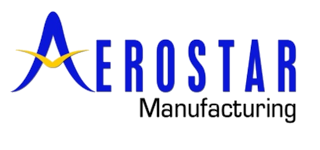By now you have probably heard of CNC machining, but do you know what it is?
According to IQS Directory:
“The CNC process, computer numerical control, is a method of manufacturing where programmed software directs the operation of factory tools and machinery. It is designed to manage a wide range of complex machines from grinders and lathes to mills and routers. The purpose of CNC is to overcome the limitations associated with manual operation of machinery where buttons, levers, controls, and wheels have to be hand activated. In concise terms, CNC is three dimensional cutting completed by a single set of programmed instructions.
“CNC Machines operate using a numerical control system where a software program controls production. The language for the process is written in G code and controls the multiple operations of a machine. CNC allows an operator to pre-program the performance of a machine to complete repetitive, predictable functions. The accuracy and efficiency of CNC has made it a popular manufacturing method primarily in the metal fabricating and plastic production industries.
“The programming of CNC begins with a CAD rendering that is translated into a computer language for the CNC system. To determine the effectiveness of the programming, the machine is put through a trial run to detect any flaws or bugs. Once any errors have been eliminated, the program is fed into the machine and it begins production.
Open loop and closed loop machine systems
“The manipulation of a material on a CNC Machine is determined by either an open looped or closed loop system. An open loop system runs in one direction until the completion of the process while a closed loop system has the ability to accept feedback and make corrections of any possible errors, which could be speed of the feed or positioning of the material.
“An open loop control system is simple whose accuracy depends on how it is calibrated. Material is fed into the system and a completed part is returned. There aren’t any in-process corrections, but the calibration has to be meticulously and carefully completed to avoid human errors. A good example of an open loop system is a washing machine where the clothes are put in the machine and removed when fully washed. The machine does not stop to correct itself or determine if the clothes are sufficiently clean.
“A closed loop system is dependent on the controller and is more complex and intricate than an open loop system. An open loop system has a controller process while a closed loop system contains an amplifier, controller, and receives feedback during the process. This can be seen in a heating system in a house where the heater activates when a set temperature is not present and deactivates or adjusts when there is enough heat. Since there is constant monitoring of the process, a closed loop system operates slower and carefully but is easy to calibrate since the system takes most of the responsibility.
“CNC equipment operates by referencing multiple axis points to remove material from the workpiece. The number of axis can vary and includes 3, 4, or 5 axes. With the basic three axes points, the material remains in the same position while being worked by the machine, which moves along an XYZ plane. The four axes points operate exactly like the three axes method with the addition of a fourth operation that may include cutting a hole or making a special cut. The five axes points method is more complicated than either of the other two. It manipulates five sides of the material and is used on highly technical complex components.
The CNC manufacturing process
“The CNC process is different from the traditional additive processes since it is a subtractive process where layers of material are removed to create custom shapes. Additive processes add layers. CNC is fully automated manufacturing with high reliability and precision machining.
“The key to the success of CNC manufacturing is the initial programming. The software must be coded with the proper instructions keeping the machine within the limitations of its parameters. The thinking of CNC equipment is derived from the person who creates its instructions in CAD, computer aided design, a basic engineering software. It is important that care be given to the development of the programmed instructions to avoid errors and loss of production time.”
